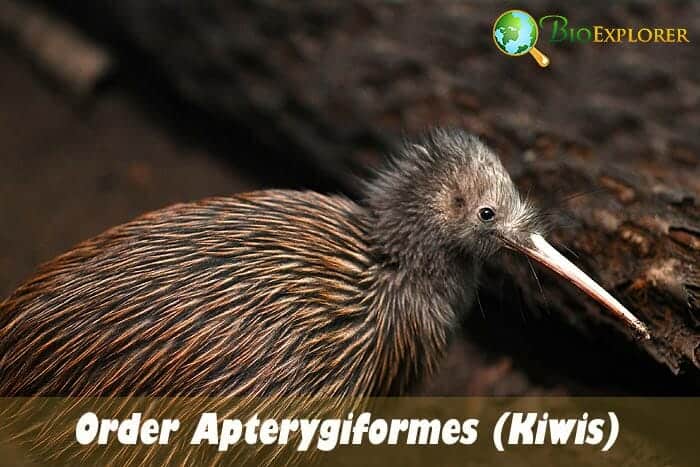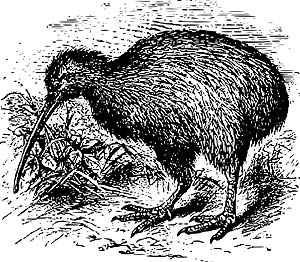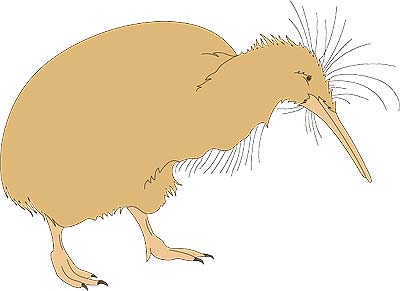
Order Apterygiformes (word origin – New Latin) is composed of flightless birds that live on the ground with vestigial wings, long bills, and small eyes. The most famous representative of this order is the New Zealand endemic species – kiwi. Most of the bird types in this order are extinct-related birds of Australia and New Zealand.
Table of Contents
National Bird of New Zealand
 Kiwis is the national bird of New Zealand. Kiwis evolved 70 million years ago from a flightless ancestor. They are closely related to the Ostrich, Emu, and Rhea birds and the now-extinct New Zealand Moa.
Kiwis is the national bird of New Zealand. Kiwis evolved 70 million years ago from a flightless ancestor. They are closely related to the Ostrich, Emu, and Rhea birds and the now-extinct New Zealand Moa.
![]()
Apterygiformes Pronounciation
![]()
Apterygiformes Characteristics
The only 5 living species of kiwi in Apterygiformes order have the following characteristics:

- Kiwis have a small, pear-shaped body.
- One of their prominent features is the presence of robust legs and feet.
- Most of the species in the order have reduced wings about 4-5 centimeters long.
- The wings of kiwis have a unique structure – each wing has a claw hidden in the plumage.
- Another typical feature of a New Zealand kiwi is a long, flexible beak with a downward curve on the end.
- The birds of this order have various colors of plumage: pink, brown, and grey.
- The bill of the kiwi hides a thick and thorny tongue.
- The feathers in these birds resemble hair: they have a soft base and a thin, thread-like upper part that is hard to the touch.
- Juvenile kiwis have softer feathers than adults.
- Kiwis are endemic to New Zealand and prefer to live in rainforests; but as those areas slowly disappear, they can be found in grasslands, shrubs, and even pine forests.
- These birds are primarily nocturnal and sleep during the day.
- Kiwis are known to be carnivorous or omnivorous – they mainly feed on earthworms, beetles, and larvae, but sometimes can eat fruit and leaves.
- Kiwis are monogamous birds; the pairs form for long periods.
- When the time to lay eggs comes, kiwis dig burrows or use natural holes and caves as nests.
- The female in the pair lays one or two large eggs while the male incubates the eggs.
- The pair raises the hatched chicks together.
Because of their lifestyles, kiwis are incredibly vulnerable due to deforestation, hunting by humans and predation.
![]()
Apterygiformes Aves
There are only 5 species in the kiwi family:
- Southern Brown Kiwi, Apteryx australis
- Little Spotted Kiwi, Apteryx owenii
- Great Spotted Kiwi, Apteryx haastii
- North Island Brown Kiwi, Apterix mantelli
- Okarito Kiwi, Apterix rowi
There are also some extinct species known in this order:
- Proapteryx micromeros.
- North Island Little Spotted Kiwi, Apteryx. o. iredelai
![]()












Are you certain that the image at the top of this page is a Kiwi, it looks remarkably like a curlew? Check out the feet which are not as robust as a Kiwi’s should be, tail possibly not visible due to the angle of the photo (there is a slight protuberance visible which could be the end of the tail). Feathers are not ‘hairy’.
You are correct Brad. We have corrected the image now. Thanks and have a great day!